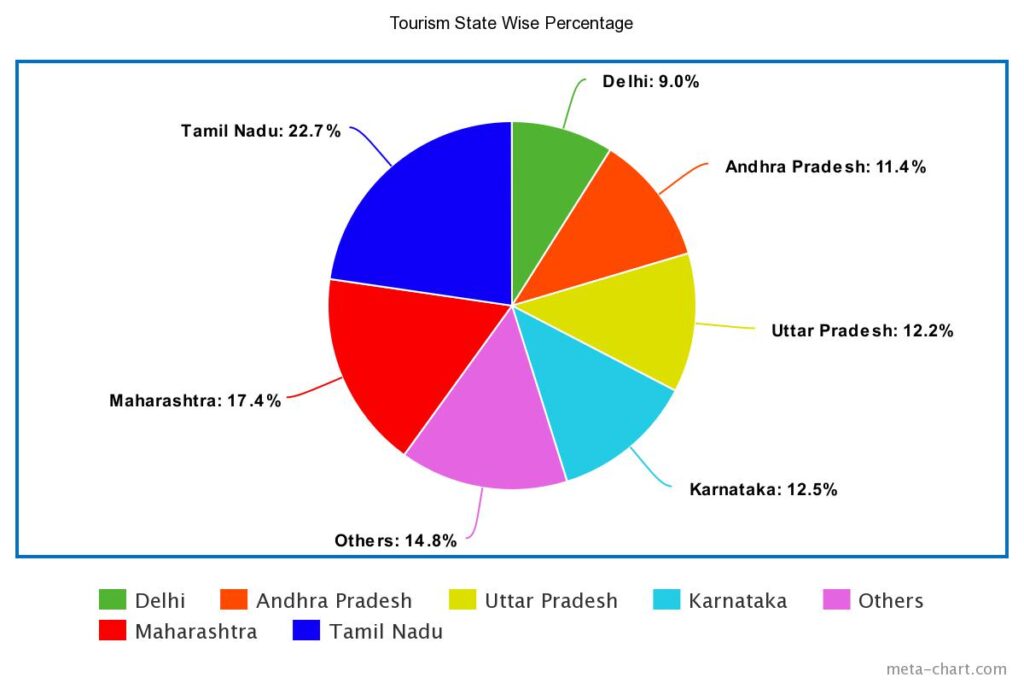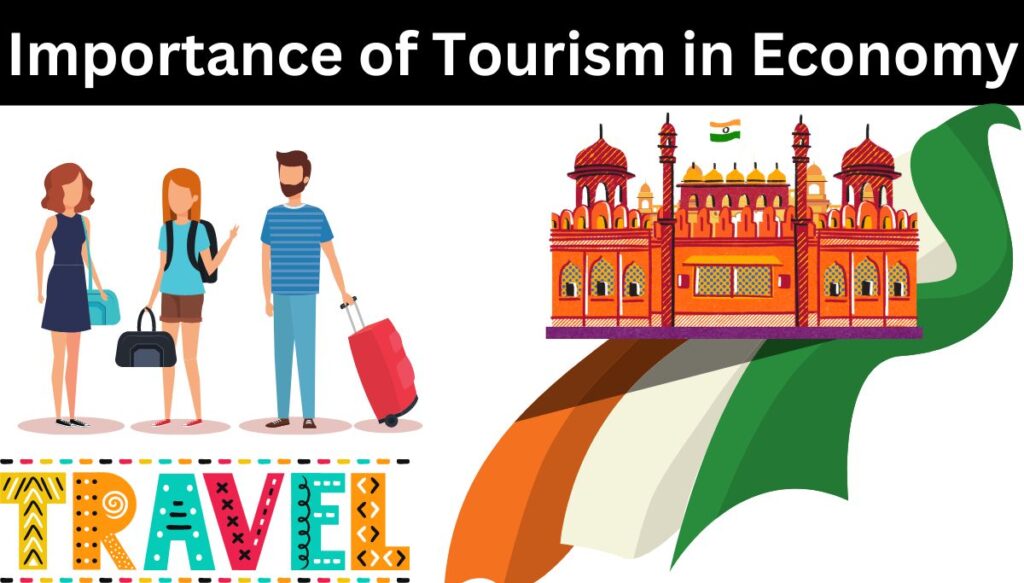Economic Importance of Tourism in India
India’s economy depends heavily on tourism, which generates around 9.2% of the GDP and employs millions of people. With the government adopting several laws and measures to encourage tourism in the nation, the industry has the potential to become a significant contributor to India’s economic development.
India is a well-liked travel destination for both local and foreign visitors due to its rich cultural history, diversified topography, and active customs. Numerous historical and cultural sites, places of religious pilgrimage, wildlife sanctuaries, beaches, hill stations, and adventure sports are all located in the nation and draw tourists from all over the world.
The Indian tourist industry also has large multiplier effects since it creates jobs in a variety of industries, including hospitality, transportation, and entertainment. By encouraging regional handicrafts and traditional art forms, it also promotes entrepreneurship and helps rural communities thrive.
The Swadesh Darshan Scheme, which strives to establish and promote theme-based tourist circuits, and the Prasad Scheme, which focuses on enhancing the infrastructure of religious pilgrimage places, are only two of the measures the government has made to boost tourism. Additionally, the government has improved air connectivity, simplified visa requirements, and strengthened security protocols for visitors.
In conclusion, the tourist industry is a significant part of India’s economy and has the potential to significantly contribute to the growth and development of the nation with the government’s continuous support.
State Wise Tourism India

Types Of Tourism in India
India has a rich cultural past, and the country’s tourist economy is greatly influenced by cultural tourism. To learn about the nation’s rich history and customs, cultural tourists visit historical sites, monuments, museums, and cultural events.
Religious tourism is a well-liked kind of travel in India, which is renowned for the variety of its faiths. Numerous religious sites, including the Golden Temple, Vaishno Devi, Kedarnath, and Badrinath, are visited by people from all over the world.
Adventure travel: India has a variety of adventurous activities, including paragliding, river rafting, climbing, and trekking. Some of the world’s greatest hiking and climbing chances may be found in the Himalayas.
Wildlife tourism: National parks and wildlife sanctuaries like Jim Corbett National Park, Kaziranga National Park, and Bandhavgarh National Park may be found across India. Visits to these parks and refuges are part of wildlife tourism, which allows visitors to take in the natural beauty of the surroundings and see animals up close.
Medical tourism: Because it provides reasonably priced medical care and top-notch facilities, India has become a favourite destination for medical travellers. For medical operations including organ transplants, cosmetic surgery, and alternative medicines like Ayurveda, people travel from all over the globe to India.
Beach tourism: With a large coastline, India is becoming more and more popular for beach travel. Goa, the Andaman and Nicobar Islands, and Kerala are among India’s well-known beach resorts.
Rural tourism, people travel to rural areas to experience the local way of life. It provides an opportunity to take in the rustic beauty of villages, interact with the locals, learn about their traditions, and enjoy local cuisine.
Economic Importance of Tourism in India Give rise to New Opportunity for the youth population
Tourist Favourite Destination in India
*Agra’s Taj Mahal is one of India’s most well-known structures and is included on the UNESCO World Heritage List. An estimated 7-8 million people visit there every year.
*Delhi’s Red Fort is a second UNESCO World Heritage Site and hosts over 3 million tourists each year.
*Delhi’s Qutub Minar, which is the world’s highest masonry minaret, welcomes almost 2.9 million people each year.
*Approximately 2.5 million people visit the Golden Temple in Amritsar each year, which is a Sikh holy place.
*Around 2 million people visit the Meenakshi Temple in Madurai each year, which is a Hindu temple.
*Jaipur’s Amer Fort, which attracts over 1.4 million people each year, is a well-liked tourist destination.
*The Khajuraho Group of Monuments in Madhya Pradesh is a UNESCO World Heritage Site and welcomes over 0.8 million people each year.
Mumbai’s Gateway of India is a well-liked tourist destination that welcomes around 0.6 million tourists each year.
Future of Indian Tourism
India offers a wide variety of attractions that can accommodate a wide range of interests and tastes, thus the future of tourism in the nation is bright. India is renowned for its long history, diverse culture, stunning scenery, and sacred places. The ‘Incredible India’ campaign and the construction of facilities are only a few of the recent government-led measures to encourage tourism in the nation.
The COVID-19 epidemic, however, has had a substantial negative influence on the world and Indian tourist industries. Lockdowns and travel restrictions have reduced the number of visitors, which has cost the business money. However, there is hope that the tourism sector will recover with the introduction of vaccines and the easing of travel restrictions.
India will need to concentrate on sustainable tourism strategies that prioritise the preservation of natural and cultural resources while offering good experiences for visitors if it wants to attract tourists in the future. To improve tourism infrastructure and services, increase visitor safety and security, and improve connection to the country’s many locations, the government and private sector must collaborate.
Additionally, the use of technology and digital platforms can improve the tourism experience and make it easier for visitors to access. The Indian tourism sector has the potential to make a large economic contribution and create millions of jobs with the correct policies, strategies, and investments.
FAQ
1. What is the best time to visit India?
Depending on the area and the experience you want, there is no one perfect time to go to India. But In general, October to March, when the weather is pleasant, is the best time to travel to most of India.
2. Is it safe to travel to India?
Yes, India is incredible . People here are of Welcoming Nature. Government is stable with world democracy and literate people. The World is full of scammers, try to avoid booking from unregistered offices. Bargain during Shopping, Watch youtube related to the place
3. What is the food like in India?
Each area of India has its own distinctive delicacies, resulting in diversified and rich food. The meals biryani, butter chicken, dosa, and samosas are all well-liked.
Conclusion
Countries like Dubai, Paris, and Maldives are examples that how a country can be run on the bases of tourism. The economic Importance of Tourism in India can Play a Major role in the future progress of the country



